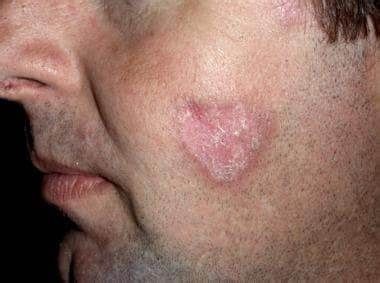Can You Have Both Systemic Lupus and Discoid Lupus? Understanding the Connection
What to Know About Living with Both Systemic and Discoid Lupus — Symptoms, Diagnosis, and Treatment Options

Yes, it’s possible to have both systemic lupus erythematosus (SLE) and discoid lupus erythematosus (DLE). Learn how they’re connected, what symptoms to watch for, and how to manage both with proper diagnosis and treatment.
Understanding the Link Between SLE and Discoid Lupus
Systemic Lupus Erythematosus (SLE) is a chronic autoimmune disease that can affect the skin, joints, kidneys, brain, and other internal organs. Discoid Lupus Erythematosus (DLE), on the other hand, is a form of cutaneous lupus that affects the skin — especially the face, scalp, and ears.
But
can someone have both at the same time?
Yes. According to the Lupus Foundation of America, between 10% and 30% of people with SLE also develop discoid lupus lesions. That means if you’ve been diagnosed with systemic lupus, you should also be aware of the signs of discoid lupus — particularly if you begin to experience unusual skin symptoms.
🧠 Fact:
Some individuals are diagnosed with DLE first and later go on to develop systemic lupus. However, this is less common — only about 5–10% of people with DLE develop SLE later on.
Source: Lupus Foundation of America – 2023
Signs and Symptoms of Discoid Lupus
Discoid lupus causes round, inflamed lesions on the skin that can be painful, itchy, and leave behind scarring if untreated.
Common symptoms include:
- 🔴 Round, coin-shaped red or purple plaques
- 🧴 Thick, scaly skin that may crust over
- 🧑🏽🦲 Hair loss if lesions appear on the scalp
- 🧕 Skin discoloration — lighter or darker patches
- ☀️ Sensitivity to sunlight (photosensitivity)
- 🔥 Burning or itching sensation on affected areas
These lesions most commonly appear on sun-exposed areas such as the cheeks, nose, forehead, ears, and scalp.
How Is Discoid Lupus Diagnosed?
If you have SLE and start experiencing persistent skin changes, it’s important to consult a dermatologist or rheumatologist.
Diagnostic tests include:
🧪
Skin Biopsy:
A small piece of the lesion is removed and analyzed under a microscope to confirm DLE.
💉
Blood Tests:
To rule out or confirm systemic involvement, doctors may order tests such as:
- ANA (Antinuclear Antibody)
- Anti-dsDNA
- Complement levels (C3, C4)
- CBC (Complete Blood Count)
📷
Photographic Monitoring:
Skin specialists may also track the progression of lesions over time using medical photography.
📚 Source: American College of Rheumatology – Cutaneous Lupus Erythematosus
Treatment Options for Discoid Lupus
While discoid lupus is a chronic condition, it can be managed effectively with the right treatment plan.
Topical Treatments
- Corticosteroid creams or ointments (e.g., clobetasol)
- Calcineurin inhibitors (e.g., tacrolimus for facial lesions)
Oral Medications
- Antimalarials like hydroxychloroquine (Plaquenil) – commonly prescribed for both SLE and DLE
- Corticosteroids – used short-term for severe flare-ups
- Immunosuppressants – in cases where lesions are widespread or resistant to other treatments
Lifestyle & Supportive Care
- Sun protection is essential. Use SPF 50+ daily and wear protective clothing.
- Avoid smoking, which has been shown to worsen discoid lesions.
- Regular check-ups with a dermatologist and rheumatologist.
📚 Source: Mayo Clinic – Discoid Lupus Treatment
Living with Both SLE and DLE
Being diagnosed with both systemic and discoid lupus can feel overwhelming — but you are not alone. Understanding how they intersect empowers you to manage your health more effectively. Awareness of symptoms, early intervention, and proper skincare can go a long way in preventing complications and scarring.
If you're experiencing new or unusual skin symptoms along with your lupus diagnosis, speak to your healthcare provider right away.
